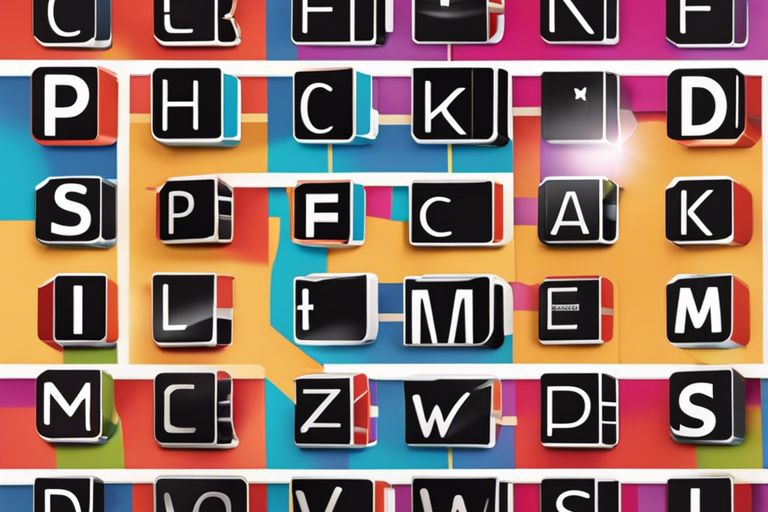Success in teaching phonics lies in implementing revolutionary instructional strategies that lead to unparalleled results. By incorporating systematic and explicit phonics instruction, educators can significantly enhance students’ reading and spelling abilities from kindergarten through sixth grade. Through various phonics methods such as synthetic, analytic, and analogy phonics, teachers can effectively teach students how to decode words and improve their comprehension skills. It is crucial for teachers to understand the importance of phonemic awareness and to integrate phonics instruction with other reading components to create a holistic reading program. This blog post will explore the transformative power of phonics instruction and provide valuable insights into how teachers can optimise their teaching strategies for ultimate success in the classroom.
Key Takeaways:
- Effective Phonics Instruction: The meta-analysis results clearly show that systematic phonics instruction greatly benefits students in various grade levels, particularly those struggling with reading. Systematic synthetic phonics, in particular, has a significant positive impact on disabled readers, low-achieving students, and children from low socioeconomic backgrounds.
- Importance of Phonics Integration: While systematic phonics instruction is crucial, it is crucial to integrate it with other reading components such as phonemic awareness, fluency, and comprehension strategies. A holistic approach to reading instruction ensures that students develop the necessary skills for accurate decoding, word recognition, and comprehension.
- Teacher Training and Flexibility: Teachers play a vital role in delivering effective phonics instruction. It is important for educators to receive evidence-based training on evaluating phonics programs and adapting instruction to meet individual student needs. Flexibility in teaching methods and the integration of phonics within a balanced reading program are key to ensuring optimal learning outcomes.
The Foundation of Phonics Instruction
Pillars of Phonics: Understanding the Basics
To build a strong foundation in phonics instruction, it is important to understand the basics of how letters are linked to sounds and spelling patterns. Phonics instruction aims to help beginning readers grasp these letter-sound correspondences and apply them effectively in their reading. By teaching students to recognise individual letters or letter combinations and blending them to form words, phonics instruction sets the stage for reading success.
Historical Perspectives on Phonics Teaching
On a historical note, phonics instruction has evolved over time, with varying approaches such as synthetic phonics, analytic phonics, and embedded phonics being used to teach children the intricacies of decoding words. The systematic and explicit nature of phonics instruction has shown significant benefits, particularly for students in kindergarten through 6th grade and those facing reading challenges.
The Role of Phonics in Literacy Development
To further research into the role of phonics in literacy development, it is important to acknowledge that while phonics skills are crucial for learning to read, they are not the sole factor in achieving reading fluency and comprehension. Integration with phonemic awareness, fluency, and comprehension strategies is vital in creating a holistic reading program that nurtures well-rounded readers.
Understanding the Need for Innovation in Phonics Teaching
Evaluating the Efficacy of Traditional Phonics Methods
Efficacy of traditional phonics methods has been a subject of extensive research. According to studies like ‘And Others Becoming a Nation of Readers – ERIC’, systematic phonics instruction has proven to significantly benefit students from kindergarten to 6th grade. From enhancing reading and spelling skills in kindergartners to improving word decoding and comprehension in first graders, the impact of traditional phonics methods is evident. However, the question arises: How do these traditional methods align with the ever-evolving needs of modern literacy education?
Emerging Challenges in Literacy Education
Teaching phonics in today’s classroom presents unique challenges. Emerging trends in literacy education demand a shift towards more innovative and adaptable teaching strategies. As technology revolutionises the way we learn and engage with information, educators must find ways to integrate traditional phonics instruction with modern literacy demands. Addressing these challenges is crucial for equipping students with the necessary skills to thrive in a digital age.
Educational Studies and Insights: The Demand for Change
Change in phonics instruction is not merely a choice but a necessity in light of evolving educational landscapes. With data indicating the effectiveness of systematic phonics programs, the demand for educational change is clear. It is imperative to explore new methods and approaches that bridge the gap between traditional phonics instruction and the demands of 21st-century literacy. Adapting to these insights is key to ensuring students are equipped for academic success in our rapidly changing world.
Revolutionary Phonics Instruction Strategies
Embedded Phonics – Contextual Learning
To effectively immerse students in the world of phonics, the Embedded Phonics strategy advocates for contextual learning. By seamlessly integrating phonics instruction within text reading activities, students gain a deeper understanding of letter-sound relationships. This holistic approach not only enhances phonics skills but also fosters a love for reading as students apply their knowledge in real-world situations.
Analytical Phonics – A Whole Language Approach
To cater to diverse learning styles, the Analytical Phonics strategy embraces a Whole Language Approach. By guiding students to analyse letter-sound connections within familiar words, this method promotes a deeper understanding of phonics principles. Through this approach, students are empowered to decipher new words with confidence and develop a strong foundation in phonics.
Synthetic Phonics – Systematic Letter-Sound Mastery
Systematic in its approach, the Synthetic Phonics strategy focuses on mastering letter-sound correspondences in a structured manner. By explicitly teaching students to decode and blend sounds to form words, this method lays a solid foundation for reading proficiency. With a systematic progression of phonics elements, students build a strong repertoire of decoding skills for lifelong literacy success.
Multisensory Phonics – Engaging Multiple Learning Pathways
Analytical and engaging, the Multisensory Phonics strategy enhances learning by stimulating multiple senses. By incorporating visual, auditory, and kinesthetic elements, students experience phonics in a dynamic and interactive way. This approach not only reinforces letter-sound connections but also caters to various learning preferences, ensuring comprehensive skill development.
Eclectic Phonics – Blending the Best Practices
Combining the strengths of various phonics methods, the Eclectic Phonics strategy offers a versatile and adaptable approach to instruction. By blending the most effective practices from different phonics approaches, educators can tailor their teaching to meet the diverse needs of students. This amalgamation of strategies ensures a holistic and personalised phonics experience for every learner.
Incorporating Technology into Phonics Instruction
The Digital Boom in Phonics Learning
All educational sectors have witnessed a digital revolution, and phonics instruction is no exception. On the forefront of this boom is the integration of technology in phonics learning. With interactive apps, online platforms, and software, teachers can provide engaging and effective phonics instruction that caters to the digital-native generation.
Software and Applications That Reinvent Phonics Teaching
For a truly transformative phonics learning experience, educators can turn to a plethora of software and applications that redefine traditional teaching methods. These tools offer immersive and personalised learning experiences, catering to the diverse needs and learning styles of students. Incorporating these innovative technologies into phonics instruction can lead to unparalleled student engagement and success.
Incorporating technology into phonics instruction is not just about using digital tools for the sake of it. When used strategically, technology can enhance the effectiveness of phonics teaching by providing instant feedback, adaptive learning paths, and interactive activities that keep students motivated and excited about learning.
Online Resources and Platforms for Phonics Enhancement
Teaching phonics through online resources and platforms offers a world of possibilities for educators. From virtual phonics games to interactive reading exercises, these digital tools provide a dynamic and flexible way to reinforce phonics skills. By incorporating these online resources into their teaching practices, educators can create a more interactive and engaging phonics learning environment for their students.
Applications that offer phonics instruction can increase student outcomes significantly. Research has shown that integrated technology in phonics education can lead to improved reading skills and comprehension levels in students across all grade levels and abilities. By leveraging these digital tools, teachers can create a more inclusive and effective phonics learning experience for all students.
Customizing Phonics Instruction for Diverse Learners
Strategies for Learners with Dyslexia
Customizing phonics instruction to meet the needs of learners with dyslexia is crucial for their success in reading and spelling. Keep in mind that these learners often struggle with phonological awareness and need explicit, multisensory instruction. Utilising strategies such as visual aids, repetitive practice, and structured lessons can greatly benefit learners with dyslexia, enhancing their phonics skills and overall reading proficiency.
Approaches for English Language Learners (ELLs)
Customizing phonics instruction for English Language Learners (ELLs) requires a tailored approach that considers their linguistic background and proficiency level. It is crucial to provide explicit phonics instruction while also incorporating activities that build vocabulary and language comprehension. By integrating phonics with language development, ELLs can effectively improve their reading and writing skills.
It is crucial to recognise that ELLs may benefit from additional support in phonics instruction due to differences in language structure and phonemic awareness. By incorporating cultural relevance and providing ample practice opportunities, teachers can create a supportive learning environment that aids ELLs in mastering phonics skills.
Adaptive Phonics Teaching for Inclusive Classrooms
Customising phonics instruction to cater to the diverse needs of learners in inclusive classrooms is crucial for promoting educational equity. Language barriers, learning disabilities, and varying proficiency levels require adaptive teaching strategies that focus on individual student needs. By incorporating differentiated instruction, providing additional support when necessary, and fostering a supportive classroom environment, teachers can ensure that all students have access to high-quality phonics instruction.
Inclusive classrooms benefit from adaptive phonics teaching approaches that address the unique needs of diverse learners, promoting a sense of belonging and academic success for all students. By prioritising individualised instruction and creating a supportive learning environment, teachers can empower students to develop strong phonics skills and achieve success in reading and writing.

Practical Implementation of Revolutionary Phonics Strategies
Integrating New Methods into Lesson Planning
With the goal of transforming phonics instruction to achieve unparalleled success, it is crucial to integrate new, revolutionary methods into your lesson planning. The key is to align these strategies with the specific needs and abilities of your students, ensuring that they are engaged and challenged in their learning journey.
Interactive Classroom Activities and Games
Games and interactive activities are vital components of revolutionary phonics instruction. By incorporating fun and engaging games into your lessons, you can create a dynamic learning environment that motivates students to actively participate and practice their phonics skills. Plus, interactive activities and games can significantly enhance student retention and understanding of phonics concepts.
Assessment Techniques in Phonics Learning
Integrating innovative assessment techniques into phonics learning is vital for monitoring student progress and identifying areas for improvement. Revolutionary assessment methods can provide valuable insights into individual student needs and inform instructional decisions to ensure optimal learning outcomes. Revolutionise your approach to assessment to enhance the effectiveness of your phonics instruction.
Measuring Success: Evaluating Phonics Instruction Outcomes
Tools for Effective Phonics Assessment
To effectively measure the success of phonics instruction, educators need to utilise a range of assessment tools. From standardised tests to informal observations, each assessment method plays a crucial role in evaluating students’ phonics skills and understanding. By using a combination of assessments, teachers can gain a comprehensive view of each student’s progress and tailor instruction accordingly.
Interpreting Assessment Data for Informed Instruction
Success in phonics instruction hinges on the ability of educators to interpret assessment data effectively. By analysing assessment results, teachers can identify areas of strength and weakness in students’ phonics knowledge and skills. This data-driven approach enables teachers to make informed instructional decisions, targeting specific areas for improvement and providing tailored support to individual students.
Interpreting assessment data for informed instruction is a crucial step towards ensuring that phonics instruction is effective and beneficial for all students. By understanding the individual needs and progress of each student, educators can implement targeted interventions and provide the necessary support to promote success in phonics learning.
Case for Continuous Improvement in Teaching Phonics
One of the key components of successful phonics instruction is a commitment to continuous improvement. By constantly evaluating and adjusting teaching methods based on assessment data, educators can enhance the effectiveness of phonics instruction and maximise student outcomes. Continuous improvement also involves ongoing professional development and training to ensure teachers are equipped with the latest evidence-based practices in phonics instruction.
Phonics instruction is a dynamic field that requires constant reflection and refinement to meet the diverse needs of students. By embracing a culture of continuous improvement, educators can elevate their phonics instruction to new heights and empower students with the skills they need to succeed in reading and literacy.
Overcoming Challenges in Implementing New Phonics Strategies
Identifying and Addressing Barriers to Change
Phonics instruction plays a crucial role in early reading development. When implementing new phonics strategies, it is crucial to identify and address potential barriers to change. Research, such as the study outlined in 5 strategies to support teachers with phonics-based reading instruction, can provide valuable insights into overcoming challenges in adopting innovative phonics approaches.
Support Systems and Professional Development
Barriers can arise when educators lack the necessary support systems and professional development opportunities to effectively implement new phonics strategies. To address these challenges, it is crucial to provide comprehensive training and ongoing support to teachers. By investing in professional development, schools can ensure that educators have the knowledge and skills needed to successfully integrate innovative phonics instruction into their teaching practices.
The Future of Phonics Instruction
Predictions and Trends in Literacy Education
On the horizon of literacy education, many predictions and trends are shaping the future of phonics instruction. As highlighted by recent research findings, systematic phonics instruction has shown significant benefits for students across various grade levels, especially those facing reading difficulties. The emphasis on explicit, systematic phonics programs has been gaining momentum, indicating a shift towards more structured and effective teaching methods.
The Role of Research in Shaping Future Practices
Instruction in phonics is crucial for developing crucial reading skills, but it is equally important to consider the role of research in shaping future practices. Ongoing studies have highlighted the effectiveness of systematic phonics instruction in improving reading and spelling abilities in students, particularly those with learning disabilities or from low socioeconomic backgrounds. Research-driven practices will continue to guide educators in implementing evidence-based phonics instruction.
Preparing for the Next Wave of Phonics Instruction Innovations
On the cusp of the next wave of phonics instruction innovations, literacy educators must stay abreast of emerging trends and methodologies. With the integration of technology and interactive learning tools, phonics instruction is poised to become more engaging and effective. As we prepare for these advancements, it is crucial to align teaching practices with the latest research and best practices in literacy education.
Summing up
Now, Transformation Your Teaching: Revolutionary Phonics Instruction Strategies for Unparalleled Success has shown the importance of explicit, systematic phonics instruction in improving reading and spelling skills. The effectiveness of different phonics instructional methods and approaches, such as synthetic phonics and systematic instruction, has been demonstrated across various grade levels. However, it is crucial for educators to be cautious in endorsing all phonics instruction and to consider the individual needs of students. Preservice and inservice training for teachers, as well as the integration of phonics instruction with other reading components, are important for a comprehensive reading program. Ultimately, the goal is to equip students with the necessary knowledge and skills to apply phonics accurately and fluently in their reading and writing activities, enhancing their overall literacy development.
FAQ
Q: What is the main focus of phonics instruction in ‘Transform Your Teaching: Revolutionary Phonics Instruction Strategies for Unparalleled Success’?
A: The primary focus of phonics instruction in ‘Transform Your Teaching’ is to help beginning readers understand how letters are linked to sounds (phonemes) to form letter-sound correspondences and spelling patterns and to help them learn how to apply this knowledge in their reading process.
Q: What are the different types of phonics instructional methods discussed in ‘Transform Your Teaching’?
A: ‘Transform Your Teaching’ discusses various types of phonics instructional methods including synthetic phonics, analytic phonics, embedded phonics, analogy phonics, and phonics through spelling. Each method focuses on different approaches to teaching letter-sound correspondences and developing reading skills.
Q: What are some key findings and determinations regarding the effectiveness of systematic phonics instruction in ‘Transform Your Teaching’?
A: ‘Transform Your Teaching’ reveals that systematic phonics instruction produces significant benefits for students in kindergarten through 6th grade, particularly aiding those having difficulty in reading. The book discusses how explicit, systematic phonics programs can enhance reading, spelling, and comprehension skills, providing valuable insights for educators and readers.











